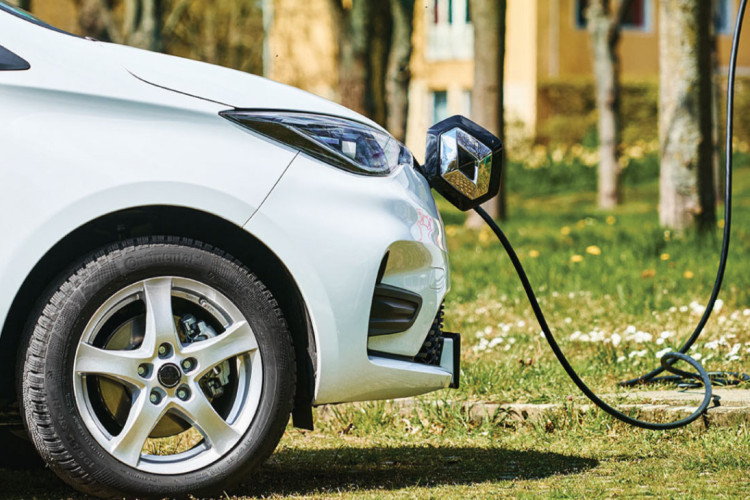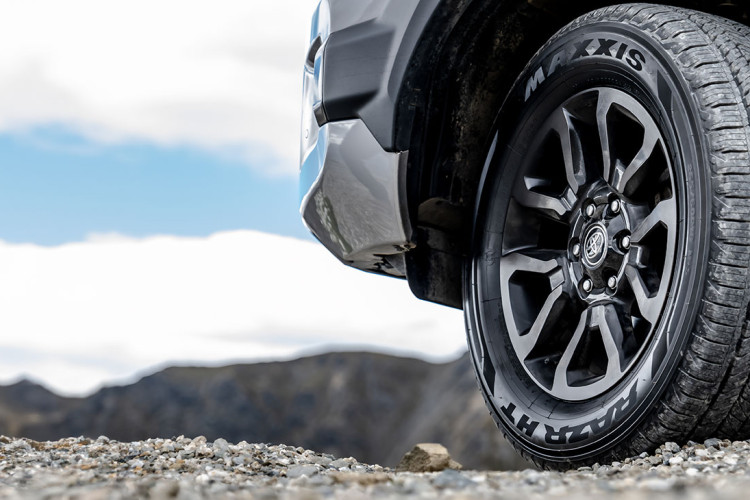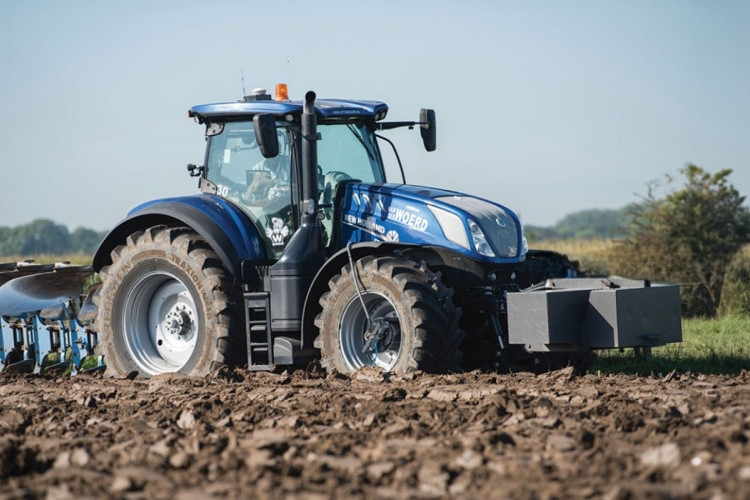The history of the tyre
The best invention since the wheel is? Ok, let’s not get into that. The most appropriate invention since the wheel might be the tyre though. But just how did this modern marvel come to be? Turns out some of it was by accident and some was by design. But nearly all of it was quite brilliant.
The Wheels on the Stagecoach Go Round & Round...
Do you know what a wheelwright is? Okay, so it's not such a popular career path these days. It was a pretty skilled job though and wheelwrights were responsible for making the forerunner of modern day tyres. Out of steel. Yes, back in ye olden days when you needed to protect a wooden wagon wheel you put a tyre of steel on it. We’re not sure what it did for traction but guess it was pretty hard wearing.
The Wheelwright would effectively take a flat strip of iron, bend it into shape and weld it together. Then it was baked on a bonfire to make it expand and more malleable. Picking it up carefully with some rather impressive looking tongs, it was placed over the wooden wheel. Next, it was cooled. This would effectively shrink the iron tyre into place over the wooden wall. Then - hey presto - you have yourself an iron tyre. We’re guessing carriages never carried spares though.
When is a good year not a good year?
When your name is Charles Goodyear. Since the early 1800’s it had been observed rubber was rather good for waterproofing and a few folk were experimenting with latex from trees in the Amazon. The problem was the rubber become brittle when cold and sticky when overheated. Charles Goodyear hit upon the idea of adding sulphur to the rubber. This had the effect of making the rubber both stronger and more elastic. The process was known as Vulcanisation (more on that in a bit). Early vulcanised rubber was then added to cycle wheels for cushioning (rather than traction). Alas, for poor Charles, he suffered from a few patent problems. Not least the fact he had sent an early version of his vulcanised rubber to Thomas Hancock, the British rubber industry founder. Thomas had noted the yellow sulphur marks and reverse engineered what had been done by Charles. Then he took out a patent on the process. Three months before hapless Charles, who later fought and lost a claim against Hancock. Charles was to die some $200,000 in debt. The company that bears his name was never founded until years after his death and his family never benefited from the association. You have to wonder if they took it as a compliment or an insult considering they never profited from the tyres which were only made possible because of Charles’ work.
Tricycles & Bicycles
It took a Scottish Veterinary Surgeon to make the next big advancement. It was 1887 and John Boyd Dunlop had observed his son use a tricycle and was convinced he could make the ride a bit more comfortable for him. He did so with the use of a garden hose, which he cut up and made into a tube. Then he simply pumped it up and fitted it to his son’s tricycle. In the process, he had invented the pneumatic tyre. It does seem obvious really when you hear the story and amazing no-one had done it earlier. As with Charles Goodyear, Dunlop has some patent issues. In his case, and unbeknownst to him, it was because his invention had already been patented many years earlier by Robert Thompson. Who gets rich in the subsequent patent battles? Probably only the lawyers, as Dunlop was later to sell shares in the company that was to bear his name for little profit.
The next big advancement was to come from bicycles. Andre Michelin and his brother had just taken over their Grandfathers failing agricultural equipment company, based in Clermont-Ferrand, France. At the time, getting a flat tyre on a bicycle was a real pain. The tyres were affixed to the wheel by glue, so replacing a flat needed special tools...and a lot of patience. There had to be a better way. This was the problem presented to Andre from a cyclist who asked him to come up with a solution. This turned out to be the making of young Andre and his brother, for the solution they came up with was the demountable pneumatic tyre. Their timing could not have been better. The fledgling automobile industry was just starting to take shape and...well...cars needed tyres. Andre Michelin gained a patent for their invention in 1891. By 1895 they began transitioning from bicycles to automobiles. In the process, they saved their Grandfathers company, successfully transitioning it to become one of the largest tyre manufacturers in the world. As an interesting aside, they actually used the Dunlop factory to begin with. You doubt the two companies are as co-operative nowadays.
A Goodyear...for Some
We circle back to Goodyear. Not Charles but the company that decided to use his name. It’s now 1898 and 38 year old Frank Sieberling has borrowed US$3,500 to fund his vision. It turns out to be a pretty canny bet. Sieberling is determined and brilliant. Two years later and Sieberling has done a deal with Henry Ford to provide racing tyres for vehicles. In 1903, Goodyear employee (and later to become CEO), Paul Weeks Litchfield, invented the first tubeless tyre. However, the tubeless tyre wasn’t to become a proper thing until the 1950’s.
Meanwhile...in Europe
Whilst it was full steam (or petrol) ahead in the United States, over in Europe tyres were moving along quite nicely too. As far back as 1901, the first Mercedes was winning races with the aid of pneumatic tyres manufactured by Continental. The company was taking advantage of the boom in automobiles and transitioning from their involvement in carriage and bicycle tyres. They were to shake up in the industry when in 1904 they unveiled the world's first automobile tyre with a patterned tread. It’s the first of a slew of advancements to come from Continental. Indeed, their focus on Research & Development continues to this day, including developing rubber made from the dandelion plant.
In 1905, Continental produced riveted anti-skid tyres. These are the forerunner to steel-studded tyres (illegal in NZ because of what they do to roads, but great in parts of the world where roads are covered in snow for several months)
Better in Black
At this point in history, tyres were mostly white. Natural rubber is off-white in colour. Manufacturers often added zinc oxide to the natural latex for strengthening. This also had the effect of making the rubber even whiter. The problem was, these tyres were quick to puncture and didn’t last long. Sure, the roads were probably a little on the bumpy side (Tarmacadam was only patented in 1902) but 5000 miles for a set of rubber was a big ask. Then in 1910, tyre manufacturer BF Goodrich struck upon the idea of adding Carbon Black to the rubber. This was done to make tyres stronger but also had the effect of changing them in color to black. As an interesting digression, the original source of Carbon Black for BF Goodrich was Binny & Smith, more commonly known as the home of Crayola Crayons.
This changing of colour also unwittingly created a bit of a trend. As Carbon Black was relatively expensive, a number of manufacturers only added it to the tread. This meant the sidewalls remained white. It became a classic look and ‘whitewall’ tyre options remained for many years. These days, it is hard to source whitewall tyres and they are very much only for the enthusiast with a classic car. Even the fabled Lincoln Town Cars, who had a white line for so many years, discontinued them in 2010. The only nod to the past in mass produced tyres will be found in the white side lettering you see on some 4WD tyres. A layer of white rubber is included in the tyre sidewall, then the tops of the letters are ground off to expose white rubber underneath.
The First Commercially Successful Tyre
You’ll no doubt have recognised plenty of famous tyre manufacturer names by now. The likes of Dunlop, Goodyear and Michelin. So who was to develop the first commercially successful tyre? Phillip Strauss of Hardman Tire & Rubber Co. of course. Phillip was looking through his Dad’s papers and discovered his old man had a patent for a process that allowed fabrics to stretch in one direction while not yielding in the other. Sometime in 1911, he recognised the potential for this forgotten advancement and used the process to produce a combination tyre. That is, a rubber tube inside an outer casing. It was great timing. The cost of asphalt in the United States was reducing, making highway construction more affordable. This was further aided by the United States Congress when they enacted the Federal Aid Road Act of 1916, to get ‘farmers out of the mud’. With smooth asphalt surfaces to drive on, the Strauss made tyres were perfect and sales soared.
So what happened to Phillip Strauss and why isn’t Hardman Tire & Rubber Co as well known as Dunlop, Goodyear etc? Who knows. Both seemingly disappeared at some point and little is known about either past references to their early success in the history books.
The Effects of War
It’s 1939 and war is beginning to take spread around the world. For the last 2 years, scientists at BF Goodrich have been working on the synthetic rubber they’ve invented. Their timing is to prove crucial to the American war efforts. By the end of the 1930’s, the United States was using half the world's supply of natural rubber. That was about to get cut off. The American Government knew they needed a replacement, they needed it fast and needed it in huge quantities. It wasn’t just for tyres either. A US Military airplane needed half a ton of rubber. A tank required 1 ton. A battleship? That’ll need 75 tons of rubber. Then there are the soldiers themselves. Each soldier required almost 15kg of rubber for footwear, clothing and equipment. In short, without rubber the war would be as good as lost.
The situation for the American war machine becomes dire when 90% of the natural rubber supply is cut off. President Roosevelt is quick to react and sets up the Rubber Reserve Company (RRC). In 1941, the big four rubber companies in the United States (Goodyear, Goodrich, Firestone and Jersey Standard) sign an agreement with RRC to share patents and information. They would go onto share over 200 patents and the Goodrich synthetic rubber is refined, improved and then manufactured by all 4. By 1945, they were producing some 70,000 tons of the stuff every month.
It’s worth noting that 70% of the rubber used in the manufacturing process today is synthetic and can trace its (chemical) roots back to the synthetic rubber that was so crucial during the War.
Michelin Makes a Comeback
Competition has been pretty intense in the tyre world for a while now. Michelin was about to steal a lead again though. Pierre Marcel Boudan wanders into the patent office in Paris on the 4th June 1946. A Technical Director at Michelin, he is patenting the radial tyre. The plys of a radial tyre run...erm...radially. The effect is astounding. You get better traction, less rolling resistance (so improved fuel consumption) and better handling. It wasn’t an overnight success everywhere though. It wasn’t until the 1970’s Oil Crisis took grip in the States and the price of Gas soared that Americans saw the light and switched to radial tyres.
2019 & Beyond
Today nearly all tyres are of a radial construction. There have been some advancements over the last few decades but nothing as dramatic as was experienced in the pre-war period. Todays advancements are more subtle. For example, the Maxxis MT772 RAZR MT, which has dramatically reduced the noise (or hum) often associated with mud tyres. Then there is the Continental UltraContact 6 tyre, with revolutionary ‘drainpipe’ water dispersal and unique blend of polymers which deliver both outstanding handling and longevity.
As for the future? Your guess is as good as ours. There’s some weird and wonderful concepts out there. Our bet is the next big advancement will come from replacing the need for natural rubber from rubber trees with an alternative source or from the changing nature of vehicles meaning innovation is required.
Related Reading
- The Henry Ford
- Developing special tyres for electric vehicles: What are the challenges?
- Continental Tyres: Taraxagum
- Six Unusual Tyre Concepts Designs for Future Transport
- Energy Education: Oil Crises of the 1970’s
- The Library of Congress: The Synthetic Rubber Project
- The Whitehouse: Franklin D Roosevelt
- Creation of a Landmark: The Federal Aid Road Act of 1916
- How Did Whitewall Tyres Disappear?
- The History & Timelines of Whitewall Tyres
- Automobile History
- Automotive Hall of Fame: Andre Michelin
- National Inventors Hall of Fame: John Boyd Dunlop
- The Plastics Historical Society: Thomas Hancock
- The Craft of the Wheelwright
- Over 145 Years of Innovation & Progress
- A Brief History of Tubeless Tyres
- History of the Passenger Tire

-
Topics:
- Tyre Technology
More tips and articles

Tyres for Electric Vehicles

Product Spotlight:
Maxxis HT780 RAZR HT

